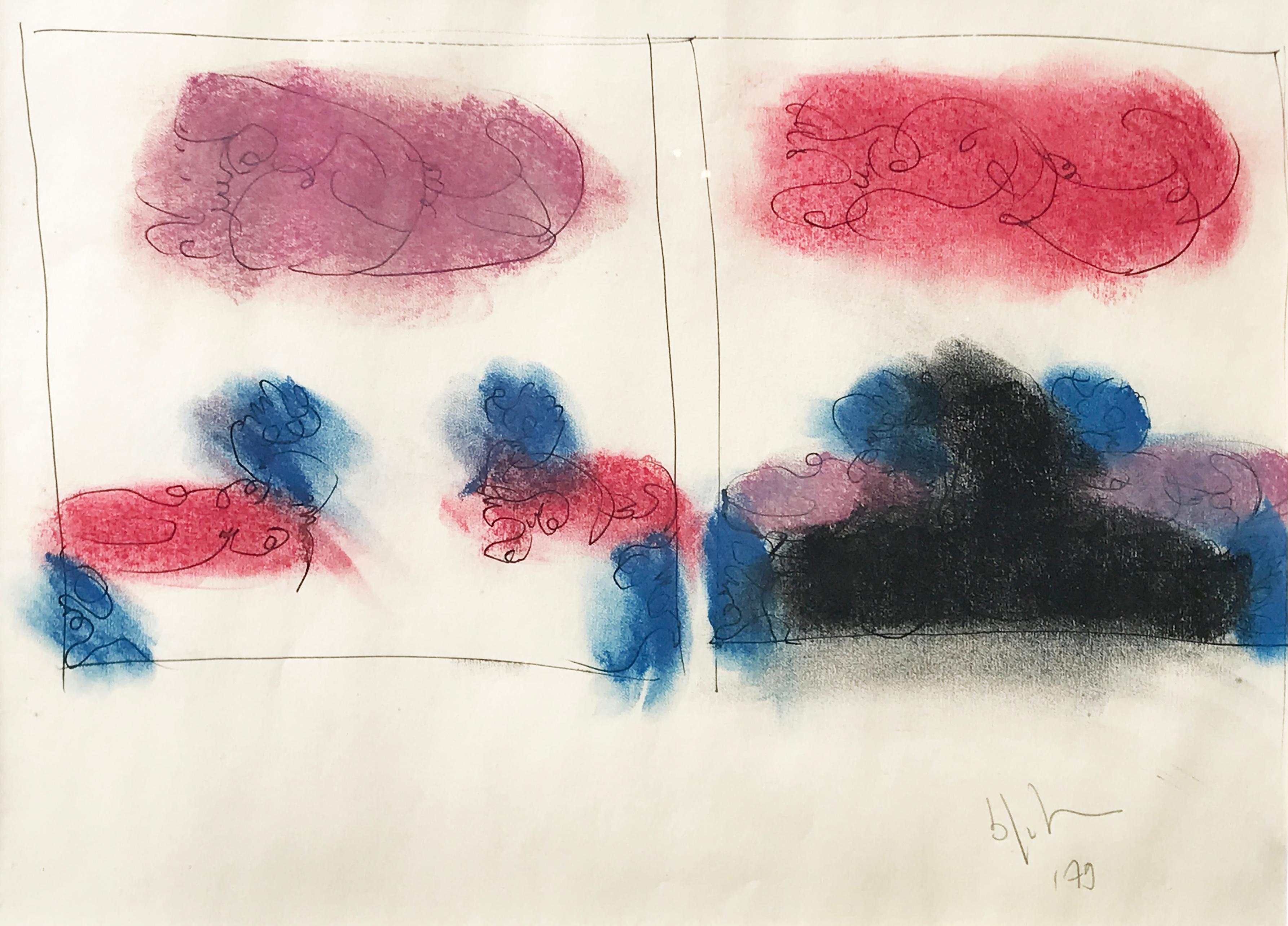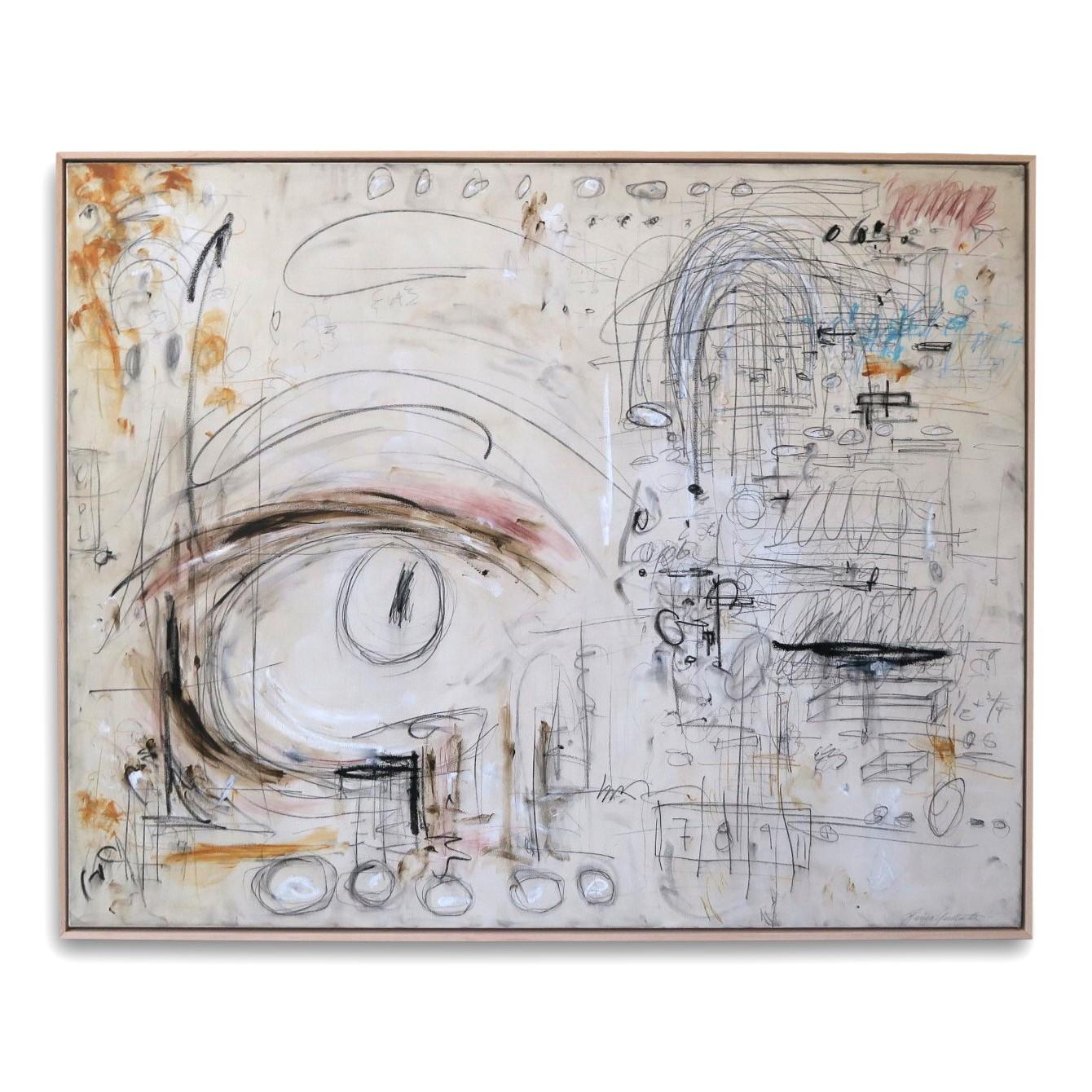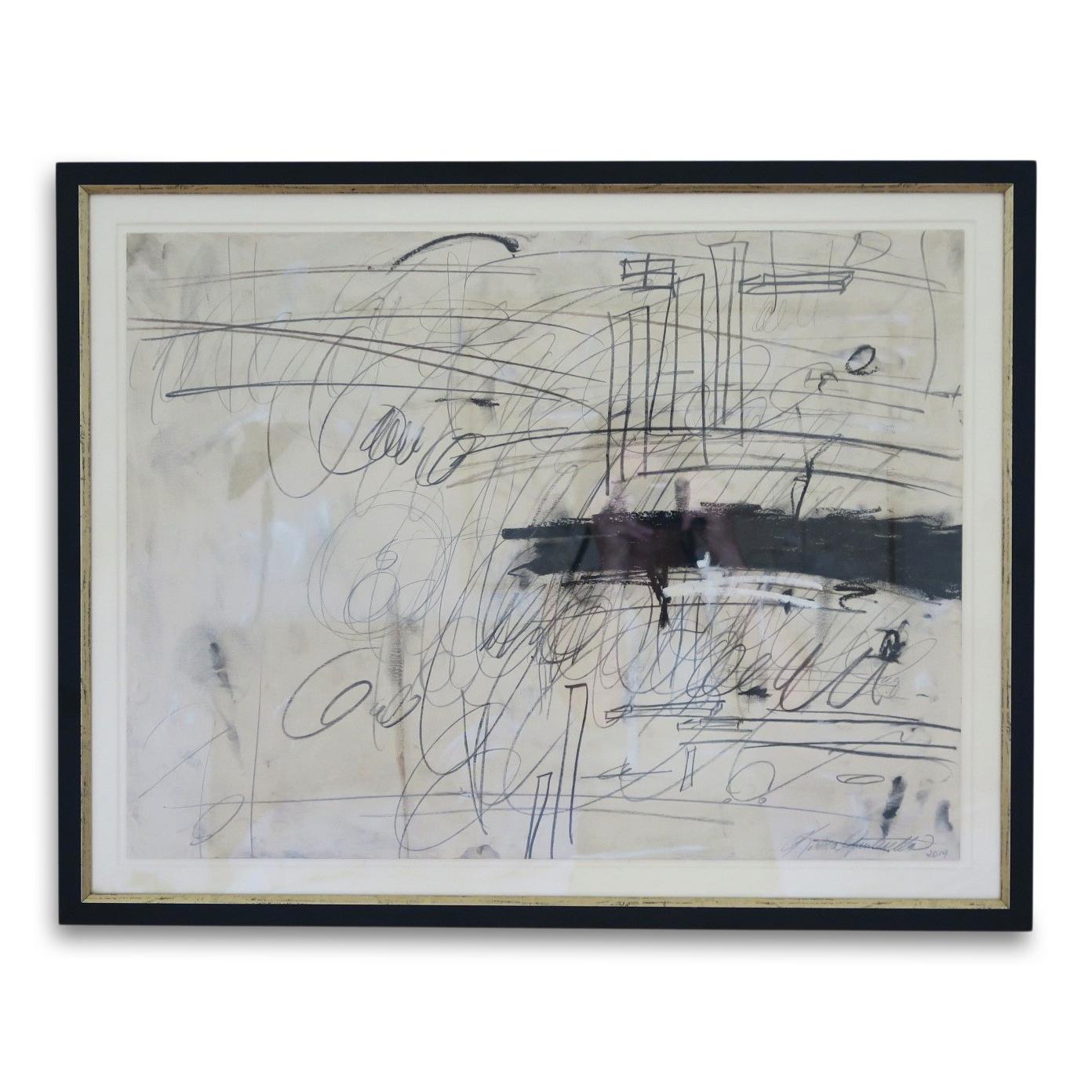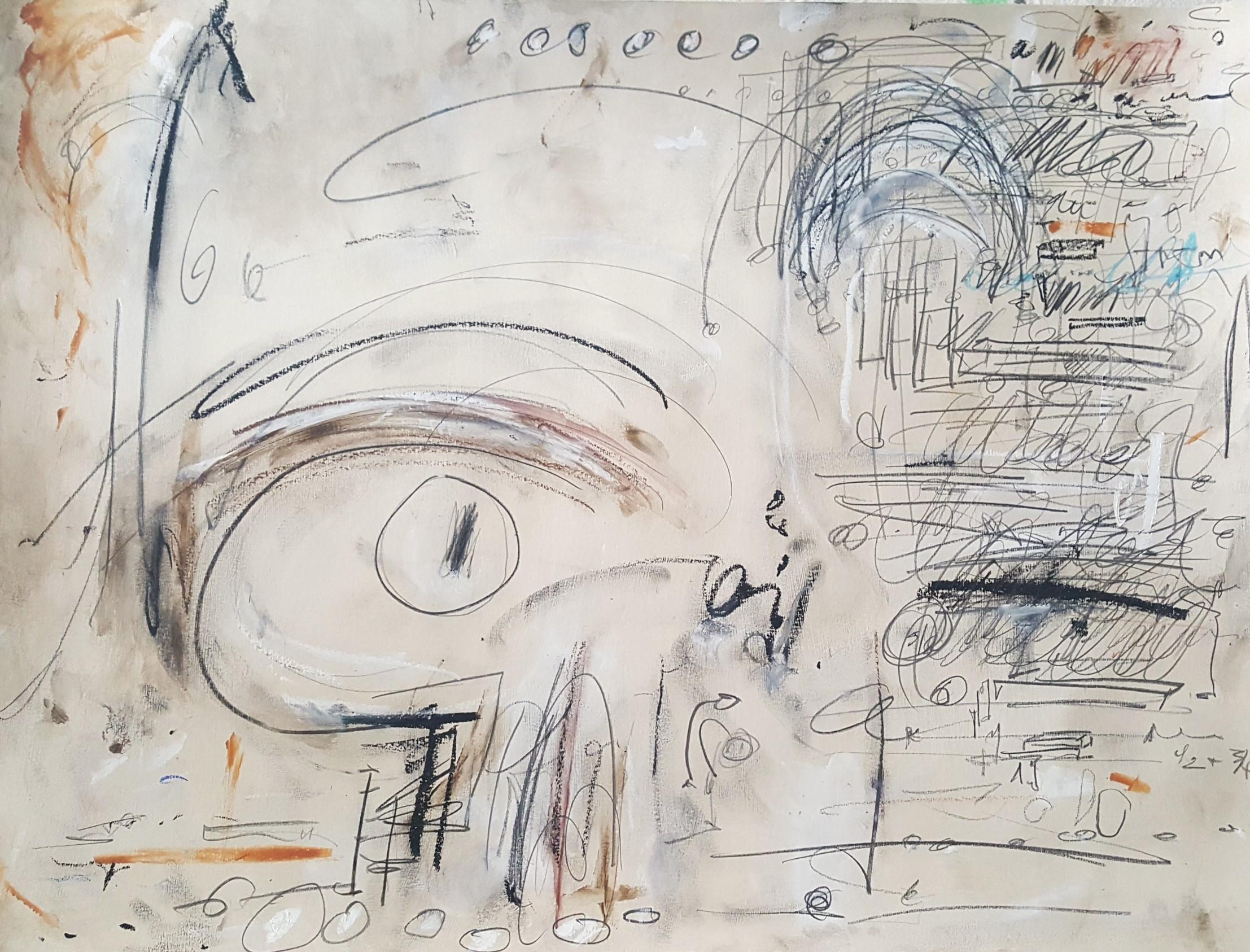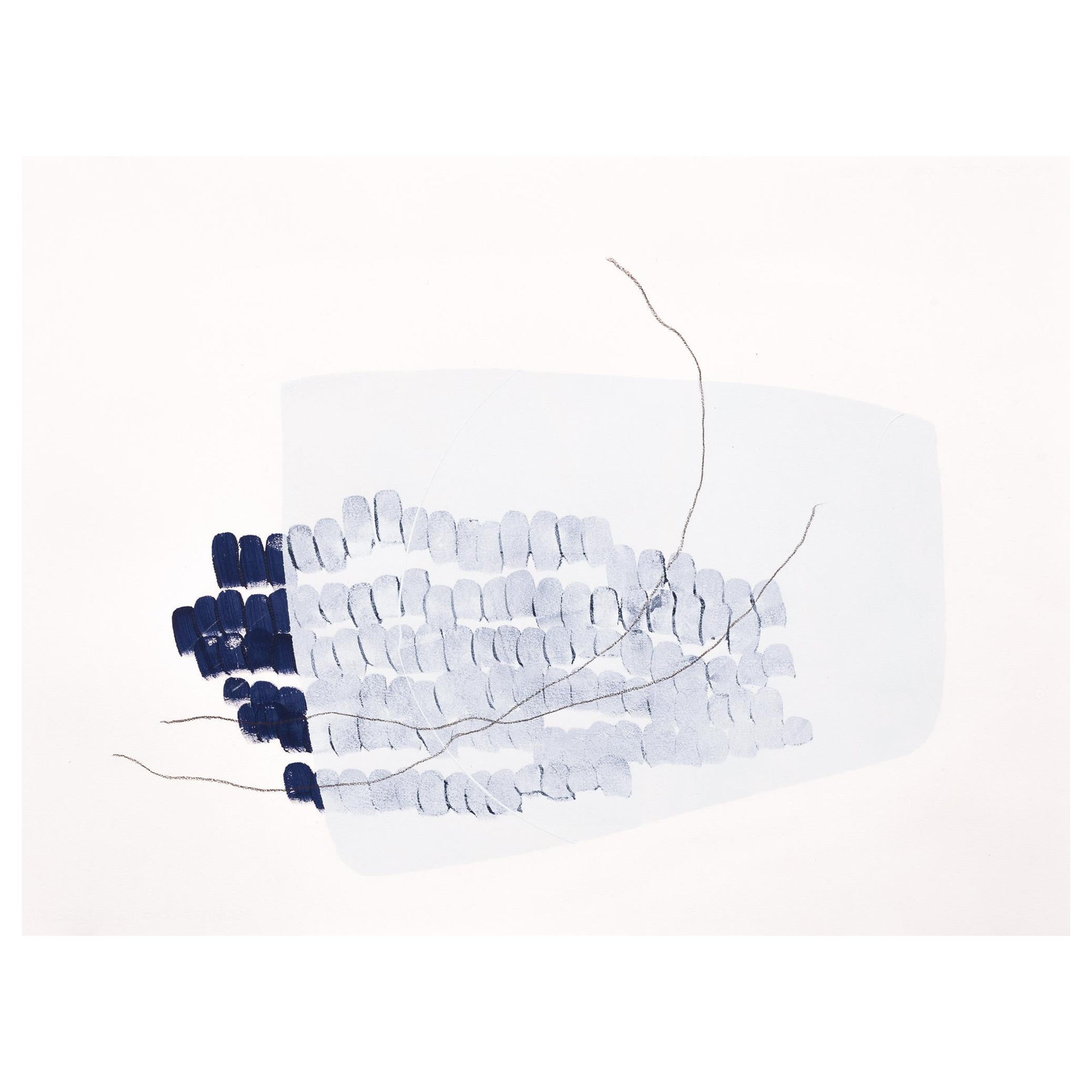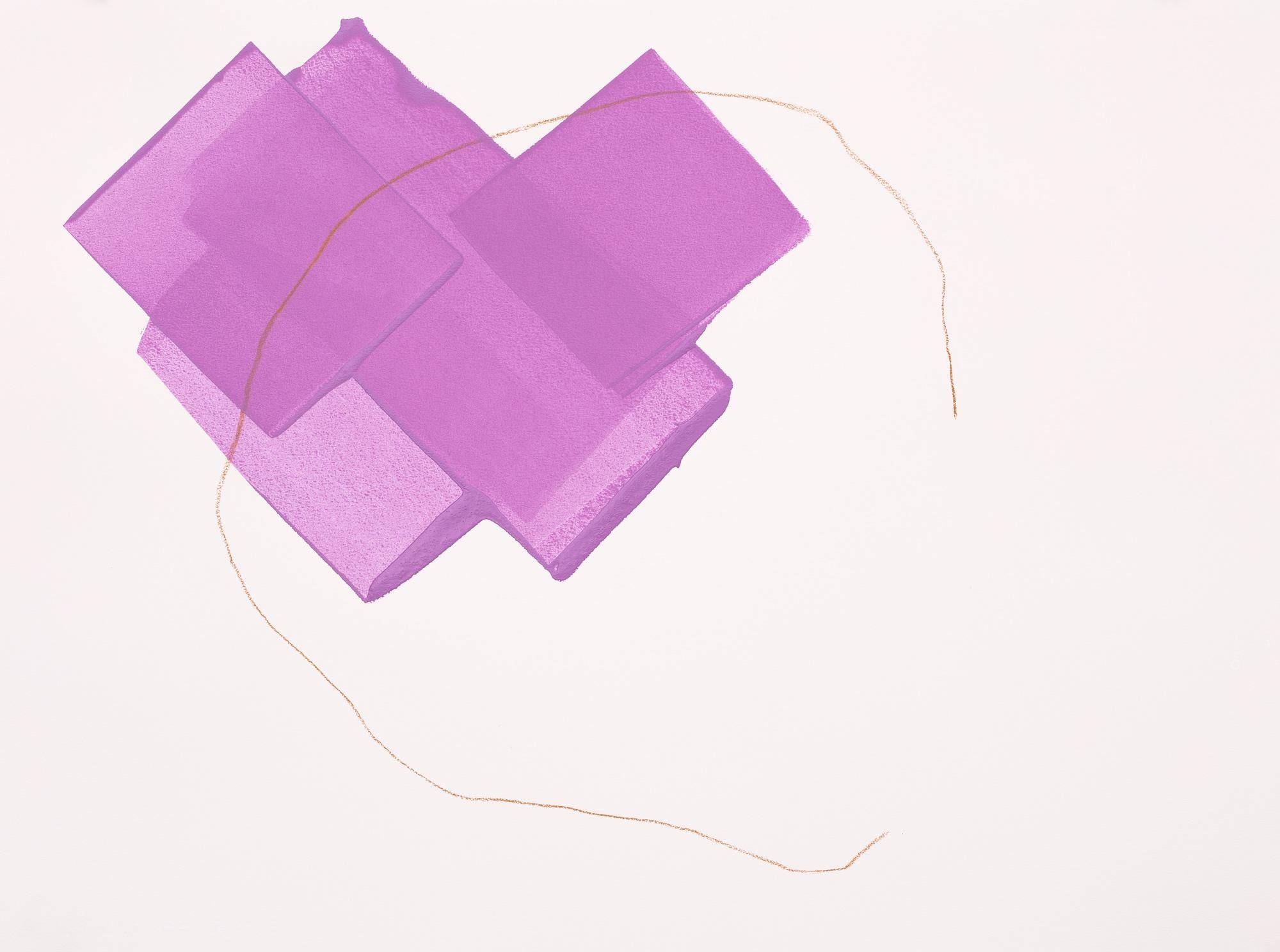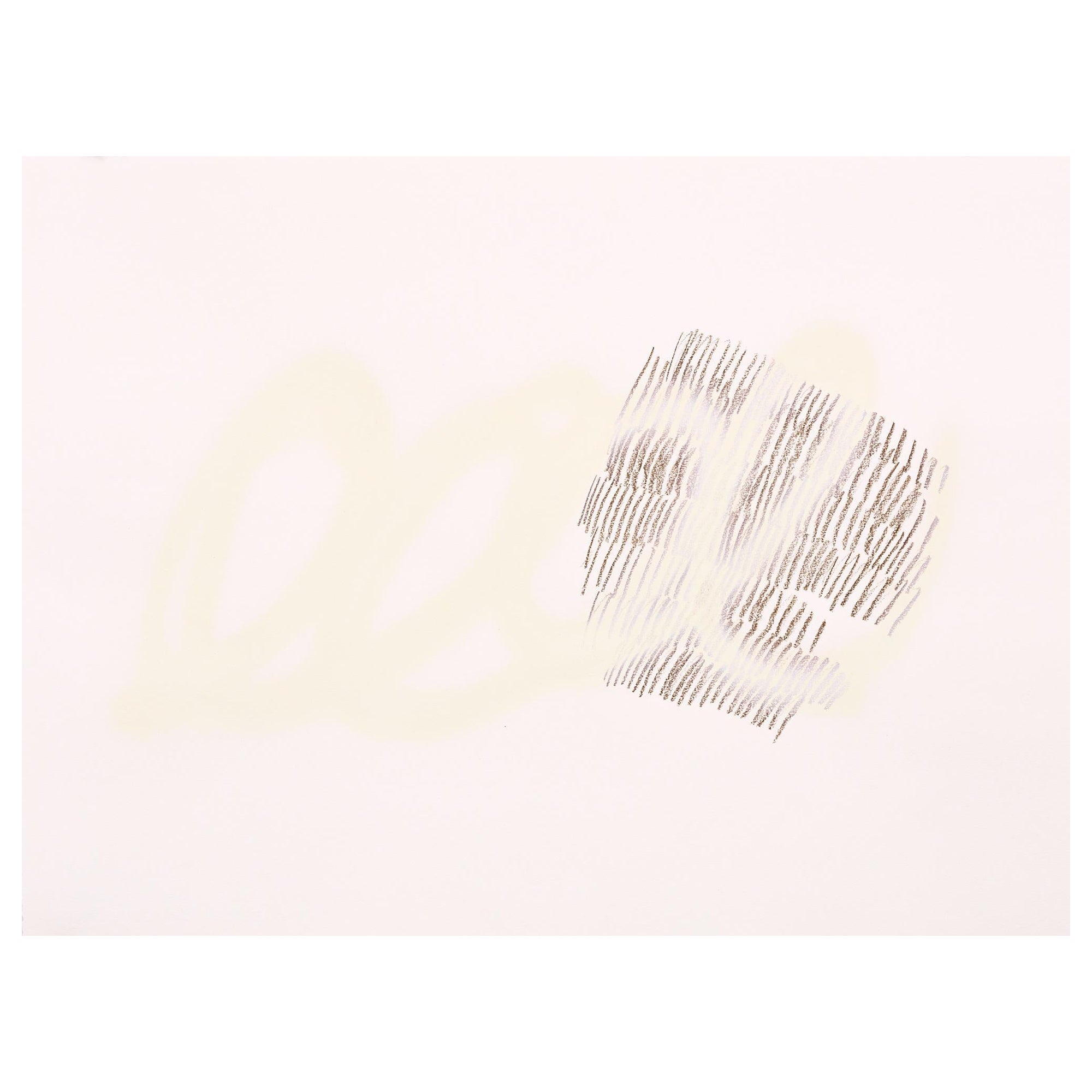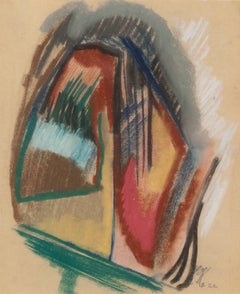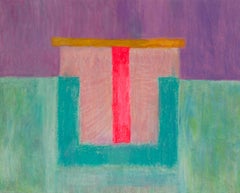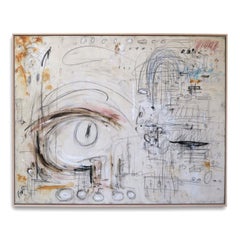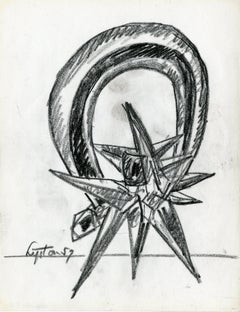
Preliminary drawing for the sculpture Diadem
View Similar Items
Want more images or videos?
Request additional images or videos from the seller
1 of 7
Seymour LiptonPreliminary drawing for the sculpture Diadem1957
1957
About the Item
- Creator:Seymour Lipton (1903 - 1986, American)
- Creation Year:1957
- Dimensions:Height: 11 in (27.94 cm)Width: 8.5 in (21.59 cm)
- Medium:
- Movement & Style:
- Period:
- Condition:
- Gallery Location:Fairlawn, OH
- Reference Number:Seller: FA103371stDibs: LU1401587123
About the Seller
5.0
Recognized Seller
These prestigious sellers are industry leaders and represent the highest echelon for item quality and design.
Platinum Seller
These expertly vetted sellers are 1stDibs' most experienced sellers and are rated highest by our customers.
Established in 1978
1stDibs seller since 2013
711 sales on 1stDibs
Typical response time: 1 hour
Associations
International Fine Print Dealers Association
More From This SellerView All
- UntitledBy Fannie HillsmithLocated in Fairlawn, OHUntitled Collage and crayon drawing, 1967 Signed and dated lower center (see photo) Condition: Small imperfections from the creative process Small tear on the left sheet edge (repai...Category
1960s Abstract Abstract Drawings and Watercolors
MaterialsCrayon
- UntitledBy Leon KellyLocated in Fairlawn, OHUntitled Pastel on paper, 1922 Initialed lower right (see photo) Exhibited: Francis Nauman, Leon Kelly: Draftsman Extraordinaire, New York, April 4 - May 23, 2014. Condition: excellent Image size: 11 8 7/8 inches Frame size: 18 1/4 x 16 1/4 inches Provenance: Estate of the artist The Orange Chicken...Category
1920s Abstract Abstract Drawings and Watercolors
MaterialsPastel
$4,000 - untitledBy Virginia DehnLocated in Fairlawn, OHUnsigned Authenticated verso by the artist's nephew, Andrew Lowe Provenance: Estate of the ArtistCategory
Mid-20th Century Abstract Expressionist Abstract Drawings and Watercolors
MaterialsPastel
- UntitledBy Peter MarksLocated in Fairlawn, OHUnsigned Provenance: Estate of the artist Peter Marks (1935 -2010) Peter Marks was born in New York City on January 18, 1935. A lifetime New Yorker, Marks graduated from the Hig...Category
21st Century and Contemporary Abstract Abstract Drawings and Watercolors
MaterialsCrayon
- SignsBy Virginia DehnLocated in Fairlawn, OHInk and pastel on paper Signed by the artist in ink lower left; titled in pencil verso From the Estate of the artistCategory
Mid-20th Century Abstract Abstract Drawings and Watercolors
MaterialsPastel
- UntitledBy Leon KellyLocated in Fairlawn, OHUntitled Pastel on paper, 1922 Signed with the artist's initials in pencil Provenance: Estate of the artist Francis M. Nauman (label) Private collection, NY A very early abstract/cubist work by Kelly. Created while the artist was studying with Arthur Carles in Philadelphia. Leon Kelly (October 21, 1901 – June 28, 1982) was an American artist born in Philadelphia, PA. He is most well known for his contributions to American Surrealism, but his work also encompassed styles such as Cubism, Social Realism, and Abstraction. Reclusive by nature, a character trait that became more exaggerated in the 1940s and later, Kelly's work reflects his determination not to be limited by the trends of his time. His large output of paintings is complemented by a prolific number of drawings that span his career of 50 years. Some of the collections where his work is represented are: The Metropolitan Museum in New York, The Whitney Museum of American Art, the Museum of Modern Art, the Philadelphia Museum of Art, and Boston Public Library. Biography Kelly was born in 1901 at home at 1533 Newkirk Street, Philadelphia, PA. He was the only child of Elizabeth (née Stevenson) and Pantaleon L. Kelly. The family resided in Philadelphia where Pantaleon and two of his cousins owned Kelly Brothers, a successful tailoring business. The prosperity of the firm enabled his father to purchase a 144-acre farm in Bucks County PA in 1902, which he named "Rural Retreat" It was here that Pantaleon took Leon to spend every weekend away from the pressures of business and from the disappointments in his failing marriage. Idyllic and peaceful memories of the farm stayed with Leon and embued his work with a love of nature that emerged later in the Lunar Series, in Return and Departure, and in the insect imagery of his Surrealist work. "If anything," he once said,"I am a Pantheist and see a spirit in everything, the grass, the rocks, everything." At thirteen, Leon left school and began private painting lessons with Albert Jean Adolphe, a teacher at the School of Industrial Art (now the University of the Arts) in Philadelphia. He learned technique by copying the works of the old masters and visiting the Philadelphia Zoo, where he would draw animals. Drawings done in 1916 and 1917 of elephants, snakes and antelope, as well as copies of old master paintings by Holbein and Michelangelo, heralded an impressive emerging talent. In 1917, he studied sculpture with Alexander Portnoff but his studies came to an abrupt halt with the start of World War I. Being too young to enlist, he joined the Quartermaster Corp at the Army Depot in Philadelphia, where he served for more than a year loading ships with supplies and, along with other artists, working on drawings for camouflage. By 1920, the family's fortunes drastically changed. His father's business had failed due to the introduction of ready made clothing and his marriage, unhappy from the beginning, dissolved. Broken by circumstance Pantaleon left Philadelphia to begin a wandering existence looking for work leaving Leon to support his mother and grandmother. He found a job in 1920 at the Freihofer Baking Company where he worked nights for the next four years. Under these circumstances Leon continued to develop his skills in drawing and painting and learned of the revolutionary developments in art that were taking place in Paris. During the day he was granted permission to study anatomy at the Philadelphia School of Osteopathy where he dissected a cadaver and perfected his knowledge of the human figure. He also met and studied etching with Earl Horter, a well known illustrator, who had amassed a significant collection of modern art which included work by Brancusi, Matisse, and Cubist works by Picasso and Braque. Among the artists around Horter was Arthur Carles, a charismatic and controversial painter who taught at the Pennsylvania Academy of Fine Arts. Leon enrolled in the Academy in 1922, becoming what Carles described as, "his best student". In the next three years Leon work ranged from academic studies of plaster casts, to pointillism, to landscapes of Fairmount Park in Philadelphia, as well as a series of pastels showing influences from Matisse to Picasso. Clearly influenced by Earl Horter's collection and Arthur Carles he mastered analytical cubism in works such as The Three Pears, 1923 and 1925 experimented with Purism in Moon Behind the Italian House. In 1925 Kelly was awarded a Cresson Scholarship and on June 14 he left for Europe. Paris The first trip to Europe lasted for approximately three and a half months and introduced Kelly to a culture and place where he felt he belonged. Though he returned to the Academy in the Fall, he left for Europe again a few months later to begin a four-year stay in Paris. He moved into an apartment at 19 rue Daguerre in Paris and began an existence intellectually rich but in creature comforts, very poor. "I kept a cinderblock over the drain in the kitchen sink to keep the rats out of the apartment" he once explained. He frequented the cafes making acquaintances with Henry Miller, James Joyce and the critic Félix Fénéon as well as others. His days were split between copying old master paintings in the Louvre and pursuing modernist ideas that were swirling through the work of all the artists around him. The Lake, 1926 and Interior of the Studio, 1927, now in the Newark Museum. Patrons during this time were the police official Leon Zamaran, a collector of Courbets, Lautrecs and others, who began collecting Kelly's work. Another was Alfred Barnes of the Barnes Collection in Philadelphia. In 1929 Kelly married a young French woman, Henriette D'Erfurth. She appears frequently in paintings and drawings done between 1928 and the early 1930s. Philadelphia The stock market crash of 1929 made it impossible to continue living in Paris and Kelly and Henriette returned to Philadelphia in 1930. He rented a studio on Thompson Street and began working and participating in shows in the city's galleries. Work from 1930 to 1940 showed continuing influences and experimentation with the themes and techniques acquired in Paris as well as a brief foray into Social Realism. The Little Gallery of Contemporary Art purchased the Absinthe Drinker...Category
1920s Abstract Abstract Drawings and Watercolors
MaterialsPastel
$4,000
You May Also Like
- UntitledBy Norman BluhmLocated in Washington Depot,, CTProvenance: Norman Bluhm to current owner Trained as an architect under Mies van der Rohe, Norman Bluhm created paintings with an abiding sense of structure, balance, and compositio...Category
1970s Abstract Mixed Media
MaterialsOil Crayon, Ink
- "Eye of the Beholder" Acrylics, Pencils, Oil Pastels in Neutral Hues of TaupeBy Karina GentinettaLocated in New York, NY"Eye of the Beholder" 2024, 48"x60" horizontal abstract painting by Argentine-born artist Karina Gentinetta (featured in Elle Decor, Architectural Digest, the New York Times, Traditi...Category
21st Century and Contemporary Abstract Expressionist Abstract Drawings a...
MaterialsOil Pastel, Acrylic, Carbon Pencil, Color Pencil
- "Untitled" Acrylics, Pencil, Oil Pastels on Paper in Hues of Black and WhiteBy Karina GentinettaLocated in New York, NY"Untitled" 2019, 28" x 22" horizontal drawing on paper by Argentine-born artist Karina Gentinetta (featured in Elle Decor, the New York Times, Tradi...Category
21st Century and Contemporary Abstract Expressionist Abstract Drawings a...
MaterialsOil Pastel, Carbon Pencil, Glaze, Acrylic
- "Untitled" Acrylics, Pencils, Oil Pastels on Paper in Neutral Hues of TaupeBy Karina GentinettaLocated in New York, NY"Untitled" 2019, 25" x 31" horizontal drawing on paper by Argentine-born artist Karina Gentinetta (featured in Elle Decor, the New York Times, Tradi...Category
21st Century and Contemporary Abstract Expressionist Abstract Drawings a...
MaterialsGlaze, Oil Pastel, Acrylic, Carbon Pencil
- Untitled (Līnea Study), 2022Located in Washington, DCOriginal work by Mary Early. Graphite, wax crayon, and sumi ink on Arches paper, 12.25 x 16". "The production, or “pouring,” of beeswax elements has become a meditative process that is integral to my art practice, serving as an observation of time, materials, and space. The raw beeswax I use has taken its form at the end of a long series of natural processes followed by a manufacturing process, and once it is in my hands, the studio becomes a factory. I apply my own methods of transforming the material by casting the beeswax into three-dimensional forms. Once I have fixed both a place and a time in the future for a potential installation, I begin to determine how the beeswax lines will take their aggregated shape in that space and, simultaneously, how many lines might be manufactured for that particular space in the amount of time available." Mary Early (born 1975, Washington, DC) lives and works in Washington, DC. She studied visual art, film, and video at Bennington College, and her work has been exhibited at the United States Botanic Garden, Washington Project for the Arts, the Corcoran Gallery of Art, Second Street Gallery (Charlottesville, VA), Hemphill Fine Arts (Washington DC,) the Austrian Cultural Forum (Washington DC), Galerie Im Ersten (Vienna, Austria), Kloster Schloss Salem (Salem, Germany), Kunstlerbund Tubingen (Tubingen, Germany), and the American University Museum (Washington DC) among other regional and national galleries. Her early work incorporated formed concrete, tarpaper and paraffin wax, fabricated wood structures, and, increasingly over the years, surfaces coated with wax as a method of preserving or concealing an object within. Recent works have relied solely on solid forms cast in wax, abandoning the use of any permanent armature. Temporary installations are guided by schematic drawings and plans, which then serve as a permanent record. In 2014 she exhibited her first large-scale installation of wax lines at Second Street Gallery in Charlottesville, VA, followed by temporary installations in response to various historical sites in Salem, Germany (2016) and Tubingen Germany (2017). In 2017 she participated in the exhibition “Twist-Layer-Pour” at the American University Museum, which included Untitled [Curve], an installation of thousands of beeswax lines assembled on the floor of the museum. In spring 2018 she was commissioned to create a temporary installation at the Sun Valley Center for the Arts, Sun Valley Idaho. This work took the form of two intersecting curtains of hanging beeswax lines bisecting a 12’ foot x 18’ foot room, providing an immersive and enclosed viewing space. Early’s work is included in the collections of the US Department of State/Embassy of Panama, Kimpton Hotels, and the District of Columbia Art Bank among other public and private collections. She is a recipient of the Artist Fellowship Grant from the DC Commission on Arts & Humanities, Washington DC (2020, 2019, 2018, 2017, 2016, 2015, 2014, 2011, 2009, 2007). Early is the director of HEMPHILL Fine Arts, Washington, DC, and serves on the boards of Hamiltonian Artists and Washington Sculptors Group. She handles the work of contemporary artists and artist estates, including the work of William Christenberry, Colby Caldwell, Hedieh Javanshir Ilchi, Linling Lu, Mingering Mike, Robin Rose, Renée Stout...Category
21st Century and Contemporary Abstract Geometric Mixed Media
MaterialsArchival Paper, Graphite, Wax Crayon, Sumi Ink
- Firmamento (Sea)Located in New York, NYFirmamento (Sea), 2021 Acrylics and oil pencil on paper 10 5/8 x 10 5/8 inCategory
2010s Abstract Abstract Drawings and Watercolors
MaterialsPencil, Paper, Oil Crayon, Acrylic
